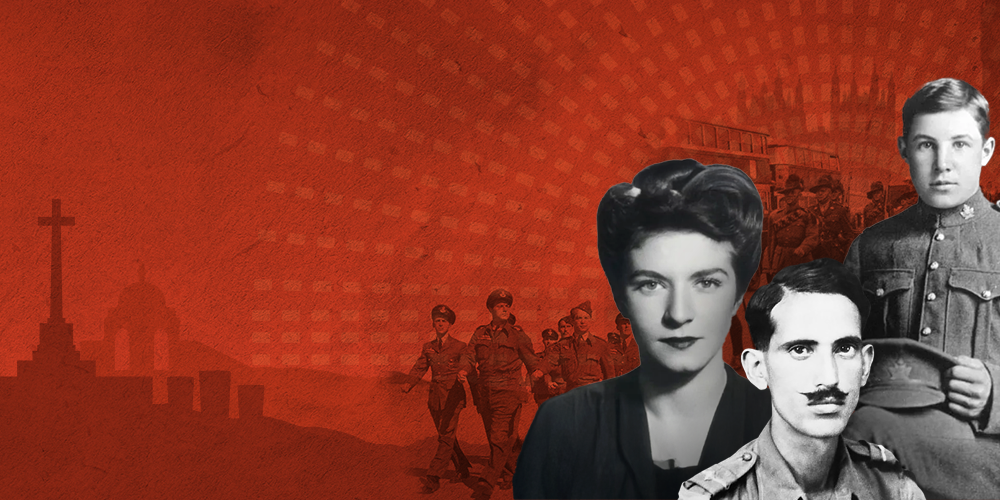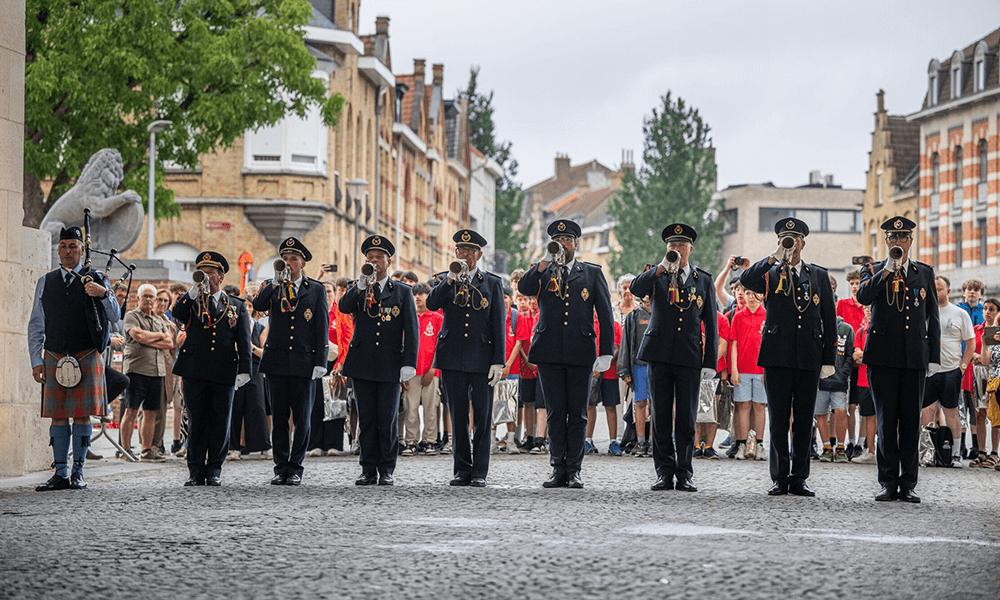
Remembrance Day Resources and Activities
Remembrance Day, observed on 11 November, honours the men and women who served in the armed forces, particularly during the two world wars.
It has become a time for refection, education and community engagement, and is a powerful opportunity to reflect on the stories of those we remember. Whether you attend a traditional commemorative service, plan an education event, or take a quiet moment of reflection, the right Remembrance Day resources can help bring meaning and depth to the occasion.
From hands on remembrance activities to thoughtful Remembrance Day ideas for all ages, this guide offers engaging ways to honour the past and inspire learning in the present.
Why is Remembrance Day Important for Children and Young People?
Remembrance Day gives us the opportunity to pass down the stories and memories of those who served in the armed forces to the next generation.
As the world wars begin to fade out of living memory, the importance of sharing their stories increases. While our physical cemeteries and memorials are an emotional reminder of the scale of sacrifice, it is through education and conversation that we can ensure that the individual stories live on.
The right Remembrance Day resources can help start the conversation and explore the stories of the armed forces, medical staff, and civilians who lost their lives to secure our freedom.

What is Remembrance Day?
For many of us, Remembrance Day is something that’s always been present in our lives. It might seem obvious now, but for those experiencing it for the first time, it does beg the question: what is Remembrance Day and why do we observe it?
The first Remembrance Day occurred on 11 November 1919, one year to the day after the signing of the Armistice that ended the First World War in Europe. It became an annual tradition, with people gathering to pay tribute to those who gave their lives in the war.
During the Second World War, the anniversary was moved to the second Sunday in November, to avoid any disruption to the war effort that would come with holding events on a weekday.
After the war, this change persevered, with Remembrance Day falling on the second Sunday of the month – leading to many calling it Remembrance Sunday. Today, we still mark each Remembrance Day, paying tribute to those who lost their lives in both World Wars and in other conflicts around the world.
We still mark 11 November with the traditional silence at 11am, although it is predominantly now known as Armistice Day, to mark the moment the guns fell silent on the Western Front.
Why We Commemorate War
The impact of the world wars is immeasurable. The huge loss of life meant that you would have to be exceptionally lucky to not have lost a loved one, friend or family member.
Our ongoing commemoration of the Commonwealth fallen of the two world wars meant that those who remain have a physical place of commemoration for the person that they’ve lost.
Each of the 1.7million war dead we commemorate are marked by name in our cemeteries and on our memorials giving everyone somewhere to go to pay tribute to those they loved.
These cemeteries and memorials pay another role. They are physical reminders of the sheer number of lives lost. The importance of Remembrance is cost of war and the price of peace.
The Benefits of Learning About Remembrance Day
Learning about Remembrance Day is a vital chance to move the study of history away from memorising facts, figures and dates and towards critical thinking, emotional development and a greater understanding of the world today.
A study on Remembrance Day studies in school, carried out by the School of Education at Oxford Brookes University found that: “Particularly in primary schools, teachers noted that Remembrance Day activities precipitated discussion of these issues, and reported endeavouring to create a ‘safe’ opportunity for children to consider them in a balanced, ‘quiet and calm’, age-appropriate way.”

Photo: Eric Compernolle
Building Empathy and Understanding Through History
The saying goes that ‘those who cannot learn from history are doomed to repeat it’.
By studying history, we can learn the lessons of our predecessors and, in theory, learn from their mistakes. But studying history also offers us the chance to build empathy, to connect to the past and develop critical thinking.
Remembrance activities can help foster emotional education, allowing students to explore complex ideas, helping to balance emotional subject matter with objectivity and building nuanced thinking and emotional development.
Connecting to Real Stories from the World Wars
Perhaps the best way to learn about Remembrance Day is to create a personal connection with the people we commemorate.
The casualties of the two world wars came from each corner of the globe, from different backgrounds and from all walks of life. Using their stories creates an accessible way of approaching a large and complicated topic.
Such is the breadth of stories to tell, it is almost guaranteed that you’ll find a story that resonates, whether a tale of derring-do from the RAF, a story of courage at sea in the Royal Navy, or any number of stories from the ground forces, medical staff, porters, labourers and civilians we commemorate – there are always fitting stories of Remembrance.
Remembrance Day Facts for Kids and Young People
Each November, you might spot red poppies pinned to people’s coats or on TV, you’ll hear stories about soldiers, sailors and airmen, or take part in a two-minute silence. But do you know why we take part in these traditions each year?
From poppies and wreaths to parades and moments of silence, Remembrance Day is full of powerful symbols and history that help us understand the sacrifices made for peace. Explore the list below to discover Everything you need to know about Remembrance day:
- Date of Observance: 11 November, marking the armistice that ended the First World War in Europe in 1918.
- First Observance: The first Remembrance Day was held in 1919, originally called Armistice Day.
- Remembrance Sunday: Held on the second Sunday of November, featuring national ceremonies at the Cenotaph in London, across the UK and throughout the Commonwealth.
- Two-Minute Silence: Observed at 11:00 AM on 11 November to remember the fallen. The first Remembrance Day silence occurred in 1919, called for by King George V, who said “the thoughts of everyone may be concentrated on reverent remembrance of the Glorious Dead”.
- The Poppy Symbol: Inspired by the poem “In Flanders Fields”, the red poppy became a symbol of remembrance. Its opening lines read: “In Flanders fields the poppies blow, Between the crosses, row on row,”.
- The Cenotaph: The central memorial in Whitehall, London, where the national service takes place. It was originally a temporary structure for the 1919 peace parade and later rebuilt in stone.
- The Tomb of the Unknown Warrior: Located in Westminster Abbey, it commemorates unidentified soldiers who died in war.
- Wreath-Laying Tradition: Members of the royal family, officials, and veterans lay wreaths at war memorials across the UK, the Commonwealth, and at our cemeteries and Memorials to the Missing around the world.
Free Remembrance Day Activities for Students
If you’re looking to for some Remembrance Day ideas for your class, group or organisation – why not investigate one of our talks or tours.
One of our expert volunteers speakers can come to you and deliver one of our talks, explaining about our work and the history of the world wars – or you can come to us and visit one of our cemeteries or memorials near you where one of our tour guides will take you around the site and share some of the stories of the men and women commemorated there.
Visiting Museums, War Memorials, and Cemeteries
There are 23,000 CWGC cemeteries and memorials located in more than 150 countries and territories around the world. In the UK, our sites range from single burials in churchyards to Brookwood Military Cemetery, which holds more than 7000 burials and close to 4000 names on the memorials to the missing there.
No matter where you are, there is almost always a Commission headstone, cemetery or memorial nearby – why not plan a trip and get out to see the world war history on your doorstep.

Free Remembrance Day Resources for Teachers and Schools
Remembrance Day offers a powerful opportunity for educators to help students reflect on the sacrifices made during the World Wars and explore the enduring impact of conflict.
To support this important work, we’ve put together a range of free, high-quality learning resources designed specifically for schools. These materials, rooted in historical accuracy and educational best practices, equip teachers with engaging tools to bring remembrance into the classroom with confidence and credibility.
Downloadable Lesson Plans and Activities
We’ve created an array of lesson plans and activities geared towards learning about the men and women of the Commonwealth who fought and died during the two world wars.
Our education resources cover a range of topics, from our ‘One Day in a World War’ series, that helps explore the world wars through the lens of a pivotal day during the war or learn about the development of medical care through our Medicine on the Western Front resource.
Explore our World War learning resources
Guides for Student Research Projects
A great project for students would be to research a casualty from the world wars. Alone or in groups, students could select a casualty and plan a research project. We’ve got some great World War research guides that will help you get started. These bite sized guides will take you through how to research using our casualty database and then set you off with some helpful other sources.
 Incorporating the Last Post and Poetry into Lessons
Incorporating the Last Post and Poetry into Lessons
The Last Post has become a symbolic part of any remembrance ceremony. The History of the Last Post is rooted in tradition – originally used by military camps as far back as the 1700s to signal the last watch of the day, and the securing the camp for the night, it has transformed into a time for remembrance, often marking the beginning of the traditional two minutes silence.
The Last Post is played every evening under the iconic Menin Gate memorial, a tradition that begun in the 1920s, and has since become a part of many Remembrance services around the world.
It is often accompanied by one of the most famous Remembrance poems, The Exhortation, a segment of For the Fallen, written by Laurance Binyon:
They shall grow not old, as we that are left grow old,
Age shall not weary them, nor the years condemn.
At the going down of the sun, and in the morning,
We will remember them.
Perhaps you could hold your own Last Post service with your students?
Learning Through Poetry and Reflection
An accessible way of learning about the world wars is through poetry.
Reading the poems of the First World War is a humanising way to learn about those who served, those who lost loved one, and about the wider attitudes towards the war. Poetry helps students explore
Famous Poems to Read and Discuss
Poetry has become synonymous with world war education. Especially from the First World War, some of the most famous verses of the 20th century were penned by those who fought, or those who lost someone they loved.
There are a number of Famous Remembrance Day Poems to read and discuss this November – most famous among them: Rupert Brooke’s ‘The Soldier’, ‘And Death shall have no Dominion’, Dylan Thomas, and John McCrae’s ‘In Flanders Fields’.
Remembrance Day Ideas: FAQs
Remembrance Day is a time for peaceful refection. You can visit a CWGC war cemetery or memorial and remember the men and women commemorated there.
Begin a research project and find out more about one of the 1.7 million Commonwealth casualties of the world wars.
Read some of the stories on For Evermore, our archive of world war stories. You learn more about their lives before the war, as well as the sacrifices they made in service.
Organise a talk or tour for your group or organisation and learn more about the history near you.
Join one of our volunteer programs and help share the stories of the men and women we commemorate, or help care for their grave through our Eyes On, Hands On programme.
A Remembrance Day assembly could take a few forms, it could be history heavy, focussing on what the Armistice was, and why we still mark Remembrance and why we still use the red poppy as symbol today.
You could also focus on the human aspect of the day, share some inspirational stories of the men and women who served during the world wars. You might even be able to find someone from your school or organisation, who used to live nearby, or who is commemorated locally.
Understand the historical context of Remembrance Day
Students learn why Remembrance Day is observed, including its origins after World War I and its evolution to honour all who have served in conflicts.
Recognise the importance of remembrance and commemoration
The day encourages reflection on the sacrifices made by armed forces and civilians, helping learners appreciate the value of peace and freedom.
Explore symbols and traditions
Learners examine key symbols like the poppy, the minute of silence, and war memorials, understanding their meanings and roles in public remembrance.
Develop empathy and emotional awareness
Through stories, poems (like In Flanders Fields), and discussions, students connect emotionally with those affected by war, fostering compassion and respect.
Engage in cross-curricular activities
Remembrance Day lessons often span subjects like history, English, art, and citizenship, promoting literacy, critical thinking, and creative expression.
Encourage civic responsibility and reflection
Students are prompted to consider how remembrance influences national identity, community values, and their own roles in promoting peace and understanding.
During World War I, the Western Front was devastated by constant shelling and trench warfare. Amid the destruction, red poppies were among the first plants to bloom in the churned-up soil of battlefields, especially in Flanders.
The sight of these flowers inspired Canadian doctor John McCrae to write the famous poem “In Flanders Fields” in 1915. The poem captured the contrast between the vibrant poppies and the graves of fallen soldiers, making the flower a poignant emblem of sacrifice.
The red poppy was adopted as a symbol of remembrance by the Royal British Legion in 1921. It became part of the Poppy Appeal, a campaign to raise funds for veterans and their families.
Today, wearing a red poppy is a personal act of remembrance. It honours those who served and died in wars and supports the ongoing needs of the Armed Forces community. It also symbolises hope for a peaceful future
While especially prominent in the UK and Commonwealth countries, the red poppy is also recognised in other nations, including Canada and the U.S., as a symbol of remembrance.
While November is the traditional time of Remembrance, we encourage people to visit our cemeteries and memorials year-round.
There are several prominent anniversaries and days of commemoration that can inspire remembrance and commemoration, such as ANZAC Day, and the anniversaries of key moments during the world wars, like D-Day, the Battle of the Somme, the Battle of Britain and the invasion of Gallipoli.
But remembrance can be carried out every day. Throughout both world wars, around 1.7million Commonwealth men and women lost their lives, whether fighting on the front lines, while receiving medical care, in training or as a result of an accident.
Learning about the lives of the war dead is the ultimate form of Remembrance, sharing their stories will ensure that their sacrifices are not forgotten and help young people and students understand more about the world around them.
We have created some specific remembrance resources as part of our wider education offer. encouraging young learners to engage and think about remembrance and its global significance.
These materials explore the symbolism and iconography of remembrance, examine how remembrance and commemoration are marked across the Commonwealth, and the ultimate importance of Remembrance Day.
Our remembrance education resources are freely available to download from our website.

